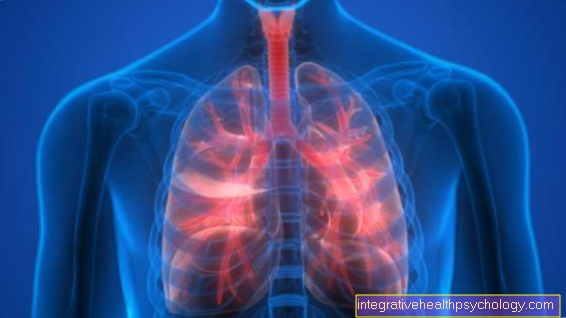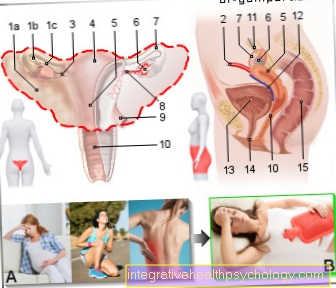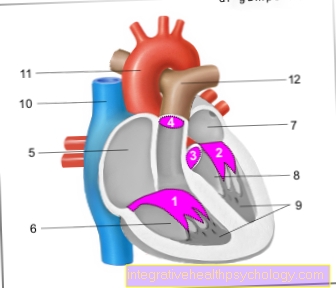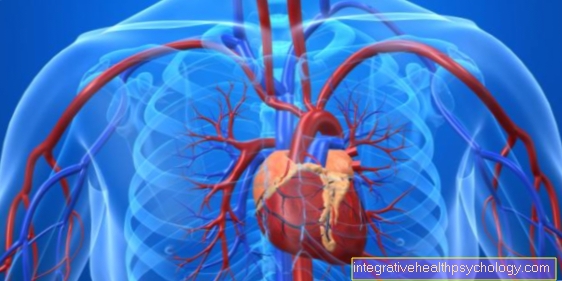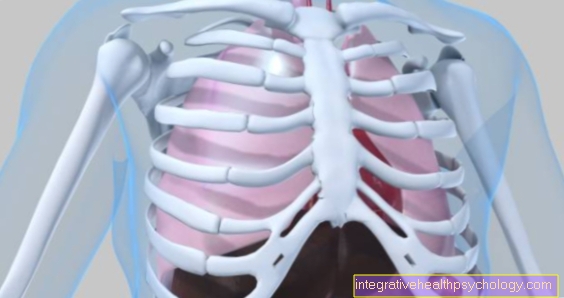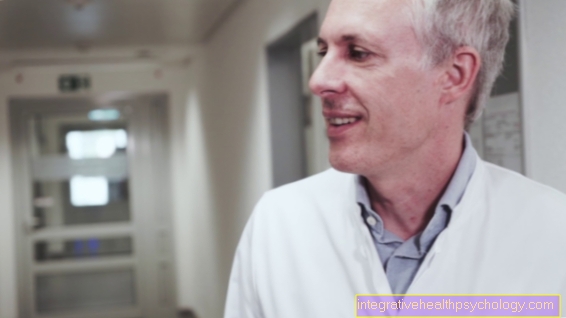Angioblastoma
Definition hemangioblastoma

Angioblastoma is the short version for hemangioblastoma.
Hemangioblastomas are benign Tumors of Central nervous system. Mostly they grow out of the Spinal cord or the posterior fossa.
The angioblastomas can occur sporadically or in families and then show up in the form of Von Hippel-Lindau disease.
An angioblastoma typically grows together with a large cyst that contains the actual tumor as a small, solid part of the wall.
The cyst that grows with the patient contains an amber-colored liquid and several of them can appear as so-called syrings in the area of the spinal cord. In the angioblastomas there is a strong production of Erythropoietin (Epo), also called Doping agents is used. The increased erythropoietin can cause the affected patient to increase red blood cells come.
Symptoms
If the hemangioblastoma is in the cerebellum, the main symptoms are:
- a headache
- nausea
- Balance disorders
- Unsteadiness
- Vertigo
If the growth of the benign tumor has progressed further, it can also lead to disturbances in consciousness. If the tumor is in the spinal cord, the person affected can show sensory disturbances and symptoms of paralysis.
In addition, unsteady gait and disturbances in defecation and urination are possible. However, the tumor rarely causes pain.
therapy
Annual check-ups are necessary in order to keep an eye on the slow, but often steadily advancing tumor growth and to be able to intervene in good time.
Magnetic resonance tomography with contrast media is the preferred method as the primary diagnosis and for monitoring the progress.
If treatment of the angioblastoma is necessary, it is removed microsurgically. In most cases, because of their benign nature, the hemangioblastomas can be completely removed and usually do not grow back.
Radiation therapy has not yet achieved any convincing results in angioblastomas and drug treatments for angioblastomas are currently being researched, so that so far the only proven effective therapy for hemangioblastomas is surgical removal.
Von Hippel-Lindau disease (VHL)definition
Von Hippel-Lindau disease was discovered by doctors Eugen von Hippel and Arvid Lindau as a hereditary tumor syndrome at the beginning of the 20th century.
In addition to hemangioblastomas, the disease also includes retinal tumors (Retinal angiomas), Kidney tumors and adrenal tumors (Pheochromocytomas). In addition, tumors of the inner ear, the epididymis and also the pancreas (pancreas) are added.
Read more on the topic: Von Hippel Lindau Syndrome
Treatment of von Hippel-Lindau disease
Multiple hemangioblastomas are often developed by the patient during the illness. A final cure by surgical removal of the currently present tumors is usually not possible, as new tumors keep growing.
The removal of angioblastomas from the CNS (central nervous system) usually succeeds without long-term damage, but it still makes no sense to remove all tumors from the patient suffering from von Hippel-Lindau disease.
Rather, it has so far proven to be useful to monitor patients with von Hippel-Lindau disease annually by means of an MRI of the brain and spinal cord. It is then discussed individually with the patient which of the tumors should be removed if possible.
Here priority is given to the tumors that cause discomfort. If there are tumors that do not cause any symptoms or discomfort, but which are growing increasingly and increasing in size during the follow-up checks, removal is also recommended.
The reason for this is that a study has found that there is generally no improvement or deterioration in the symptoms or the functional state when an angioblastoma is surgically removed. This means that, as a rule, no permanent damage is caused. On the other hand, it also makes it clear that any symptoms that have already arisen cannot be reversed by removing the causative tumor.
From this the conclusion can be drawn that it is very advisable to remove growing tumors as long as they do not cause irreversible symptoms.


